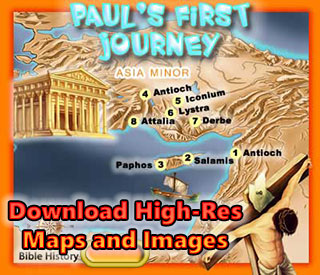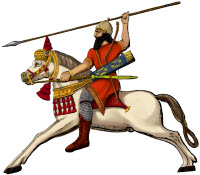|

|
|
|
|
What Happened to Ancient Jerusalem? A Peek Into Its Rich History
Jerusalem is a city that holds immense historical, religious, and cultural significance. Revered by Jews, Christians, and Muslims alike, this ancient city has witnessed the rise and fall of empires, the destruction and rebuilding of temples, and countless pivotal moments in world history. In this article, we will take a journey through time to explore the fascinating and complex history of Jerusalem, from its earliest days to its role in modern times.
The Early Beginnings of Jerusalem: A City in Ancient Canaan
The history of Jerusalem dates back thousands of years. It is believed that the city was founded around 3000 BCE, making it one of the oldest cities in the world. The first known mention of Jerusalem comes from an ancient Egyptian text, the Exodus Texts, which refer to it as Urusalim, meaning “Foundation of Peace.”
-
Canaanite Jerusalem: In the early days, Jerusalem was a small Canaanite city, inhabited by the Jebusites. The city, positioned strategically between the northern and southern parts of ancient Israel, was an important trading center. Its elevated position on a hill made it easy to defend from invaders, and its proximity to key water sources was crucial for its survival.
-
King David and the Unification of Israel: The city of Jerusalem first gained prominence in the biblical narrative during the reign of King David (circa 1000 BCE). According to the Bible, David conquered Jerusalem from the Jebusites and made it the capital of his unified kingdom of Israel. By choosing Jerusalem as his capital, David cemented its status as a political and religious center for the Israelites.
-
The Ark of the Covenant: Another key moment in the early history of Jerusalem was the bringing of the Ark of the Covenant into the city by David, which symbolized God's presence among the Israelites. This event marked the beginning of Jerusalem’s importance as a religious center for the Jewish people.
The Golden Age: King Solomon and the First Temple
David’s son, King Solomon, is credited with transforming Jerusalem into a magnificent city. His reign (circa 970–931 BCE) is considered a time of peace and prosperity, and it is during his rule that Jerusalem’s most famous structure, the First Temple, was built.
-
The First Temple: Solomon's Temple, also known as the Temple of Solomon, was constructed in Jerusalem as a permanent dwelling place for the Ark of the Covenant. The temple was a grand and sacred building, central to Jewish worship, where sacrifices were made, and priests performed rituals. Solomon’s reign is often considered a high point in the history of Jerusalem, as the city became both a political and religious hub for the Israelites.
-
The Kingdom Split: After Solomon’s death, the kingdom of Israel split into two parts: the northern kingdom of Israel and the southern kingdom of Judah, with Jerusalem as the capital of Judah. While the northern kingdom was eventually conquered by the Assyrians, Jerusalem, though surrounded by enemies, remained a significant city for the Jews.
The Babylonian Exile: The Destruction of the First Temple
The prosperity of Jerusalem came to a dramatic halt in the 6th century BCE. The kingdom of Judah was conquered by the Babylonian Empire, and the First Temple was destroyed.
-
The Siege of Jerusalem: In 586 BCE, the Babylonian king Nebuchadnezzar II laid siege to Jerusalem. After a long and brutal siege, the Babylonians breached the city and destroyed the First Temple. This event marked a pivotal moment in Jewish history, as many of the city’s inhabitants were exiled to Babylon, in what became known as the Babylonian Exile.
-
The Impact on Judaism: The destruction of the First Temple and the exile of the Jewish people to Babylon had profound effects on the development of Jewish religion and culture. It was during this time that much of the Hebrew Bible, including parts of the Torah, was compiled. The exile marked the beginning of a new chapter in Jewish history, one focused on preserving identity and faith in a foreign land.
The Persian Period and the Return to Jerusalem
In 539 BCE, the Persian king Cyrus the Great conquered Babylon and allowed the Jewish exiles to return to Jerusalem. This event was a significant turning point in the city’s history, as it marked the restoration of the Jewish presence in Jerusalem.
-
The Rebuilding of the Temple: Under the leadership of Zerubbabel, the Jewish people returned to Jerusalem and began rebuilding the Second Temple, which was completed in 516 BCE. While the Second Temple was not as grand as Solomon's Temple, it became the center of Jewish worship once again. This marked the beginning of the Second Temple Period, which lasted until the 1st century CE.
-
Hellenistic Influence: In the 4th century BCE, after the conquests of Alexander the Great, Jerusalem came under Greek influence. The city was eventually ruled by the Seleucid Empire, which promoted the spread of Greek culture. This period saw growing tensions between Hellenistic and Jewish traditions, leading to the Maccabean Revolt (167-160 BCE), which resulted in the establishment of an independent Jewish kingdom under the Hasmonean dynasty.
Roman Rule and the Second Temple’s Destruction
By the 1st century BCE, Jerusalem came under the control of the Roman Empire. The city was largely peaceful under Roman rule, but tensions between Jews and the Romans grew, particularly over religious and political issues.
-
Herod the Great: One of the most notable rulers of Jerusalem during the Roman period was Herod the Great (ruled 37–4 BCE). Herod is known for his massive building projects, including the expansion of the Second Temple in Jerusalem. Herod’s Temple was even more magnificent than the original, but it was also a symbol of Roman power, which caused resentment among the Jews.
-
The Great Jewish Revolt: In 66 CE, tensions between the Jews and Romans erupted into open rebellion in the Great Jewish Revolt. After years of fighting, the Romans captured Jerusalem in 70 CE, and the Second Temple was destroyed once again, never to be rebuilt.
-
The Fall of Jerusalem: The fall of Jerusalem in 70 CE was a devastating blow to the Jewish people. The destruction of the Second Temple was a pivotal moment in Jewish history, marking the beginning of the Jewish diaspora and the loss of Jerusalem as the religious center of Judaism for almost 2,000 years.
The Byzantine Period and Beyond
After the destruction of the Second Temple, Jerusalem continued to change hands. The Byzantine Empire, which followed the Roman Empire, made Jerusalem an important Christian center, especially after the Emperor Constantine converted to Christianity in the 4th century CE.
-
Christian Jerusalem: Under Byzantine rule, Jerusalem became a pilgrimage destination for Christians, especially after the construction of important Christian sites, such as the Church of the Holy Sepulchre, which is believed to be the site of Jesus’ crucifixion and resurrection.
-
Islamic Conquest: In the 7th century, Muslim armies conquered Jerusalem, and the city became an important Islamic holy site. The Dome of the Rock was built in 691 CE on the site where Muslims believe the Prophet Muhammad ascended to heaven.
Modern Jerusalem: A City of Contested Heritage
Jerusalem’s significance has not diminished in modern times. The city remains a focal point of religious and political conflict, particularly between Jews and Palestinians, with both groups claiming it as their capital. In 1948, after the creation of the State of Israel, Jerusalem was divided, with the western part of the city controlled by Israel and the eastern part, including the Old City, controlled by Jordan. In 1967, Israel captured East Jerusalem during the Six-Day War and has since claimed the entire city as its capital, a claim that is disputed by Palestinians and much of the international community.
Conclusion: The Timeless City of Jerusalem
The history of Jerusalem is one of triumph, tragedy, and transformation. From its ancient beginnings as a small Canaanite city to its role as a religious center for Jews, Christians, and Muslims, Jerusalem has been shaped by countless events and rulers. Its significance, both spiritually and politically, endures to this day.
The city’s rich history reflects the complex tapestry of faith, culture, and conflict that has defined Jerusalem throughout the ages. As one of the oldest cities in the world, Jerusalem continues to captivate the imagination and hearts of people around the globe.
Tags: Roman Empire Christianity Ancient History Jerusalem Judaism Islam Second Temple First Temple Byzantine Empire Maccabean Revolt Jewish History Christian Pilgrimage Muslim Holy Sites Middle East History
Kid's Bible Maps
Bible History Online
The Geography of the Bible
© Bible History Online (https://bible-history.com)
Made by Network Local

Kids Bible Maps
About
Us
Contact Us
To
Parents
To
Teachers
Kids Bible Blog
Using Our Maps
Mission
Statement
Doctrinal
Statement
Instructions
Popular Bible Maps
The Journey of Abraham
Moses and the Exodus
Joshua and the Land
The Kingdom of David
The Kingdom of Solomon
Israel in Jesus' Time
Paul's First Journey
The Land of Israel
The Land of Egypt
The Land of Assyria
The Land of Babylon
The Land of Persia
The Land of Greece
The City of Rome
Noah's Ark and Mt. Ararat
The Tower of Babel
The Old Testament World
The New Testament World
Ancient Empires
Moses and the 10 Plagues
Ancient Peoples
The 10 Commandments
The 12 Tribes of Israel
The Ministry of Jesus
Bible Stories with Maps
Daniel in the Lions Den
David and Goliath
Baby Moses
Jesus and the Little Children
Coloring Book Images
Coloring Book
Donkey
Camel
Lamb
Noah's Ark
Noah's 3 Sons
Abraham
Sheep
Lion